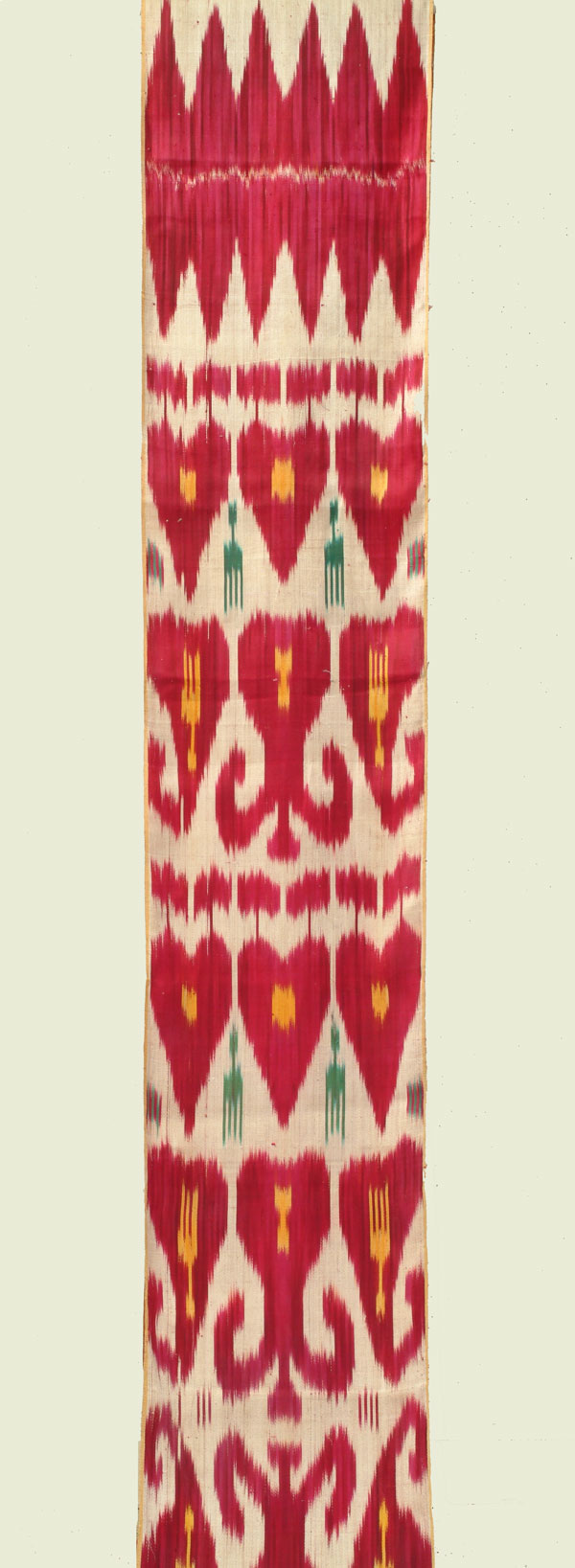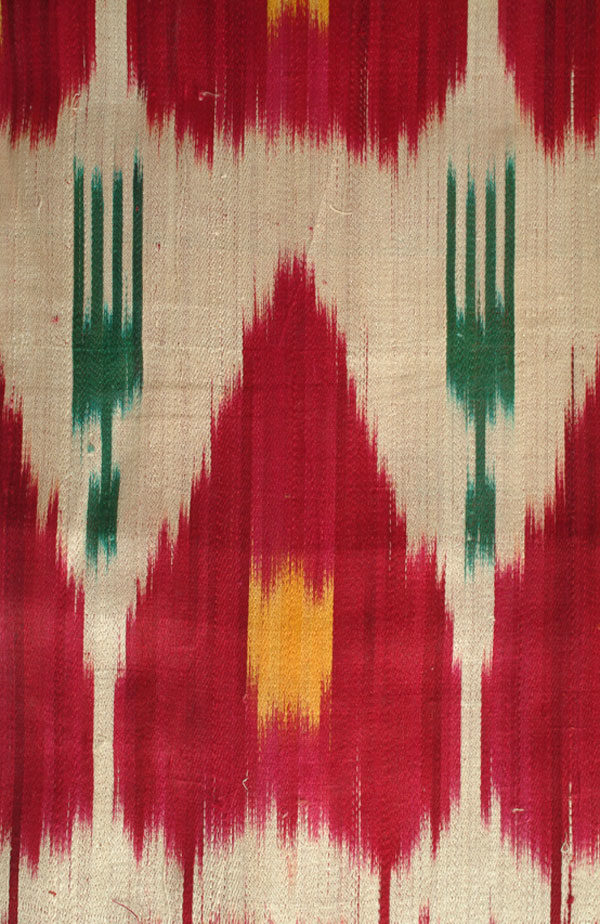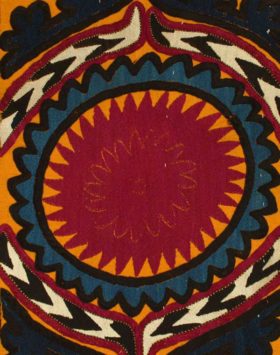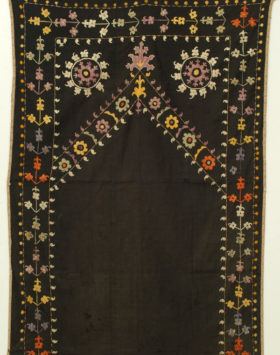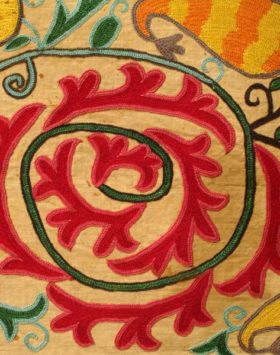Silk Ikat Yardage
This silk ikat yardage was made in Uzbekistan circa 1900. It is woven out of a silk and cotton blend and features a design with alternating rows of hearts and amulets in four colors.
Central Asian ikat originated in the 19th century, most likely in Bukhara, a bustling cosmopolitan city that would have had the requisite concentration of craftspeople necessary to support such a technically demanding process. Ikat is a difficult technique because the design is tie-dyed onto the fibers before the textile is woven, which requires great skill from the dyers, warpers, and weavers involved.
One might expect that such a difficult process would have led designers to create and conform to regular patterns to ensure they could achieve a consistent final product, but it seems that just the opposite occurred. Weavers and designers embraced the mutability of the process, experimenting and innovating with each textile they created, so no two ikats turned out quite the same. Many ikats have vertical symmetry due to the dyeing process, but just as often the weavers purposefully mismatched sections to create more visual interest.
Many of the abstracted motifs that weavers used in these ikats have been used consistently–thought not interpreted consistently–in Central Asian art for 4,000 years. While there may be some connections between certain shapes and naturalistic forms and there is folklore connected to some of the motifs, these ikats were not made to be “read” or to convey a set meaning.
Circa: 1900
Origin: Uzbekistan
Material: silk and cotton blend
Condition: Excellent
Dimensions: 16" x 268"
Inventory number: TX3366
$1,600
SOLD
Call: (646) 370-6801
E-mail us: yosi@sarajo.com
